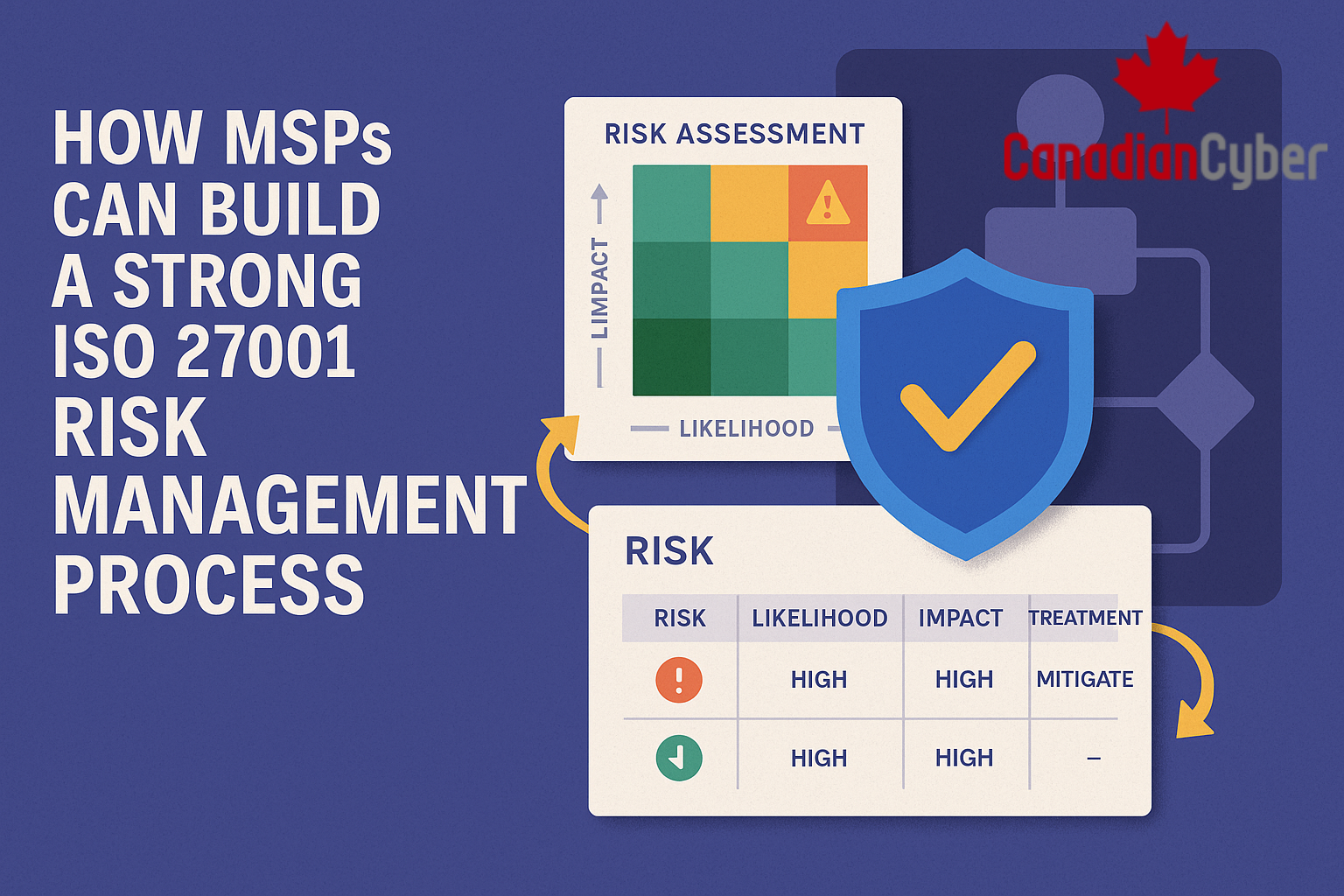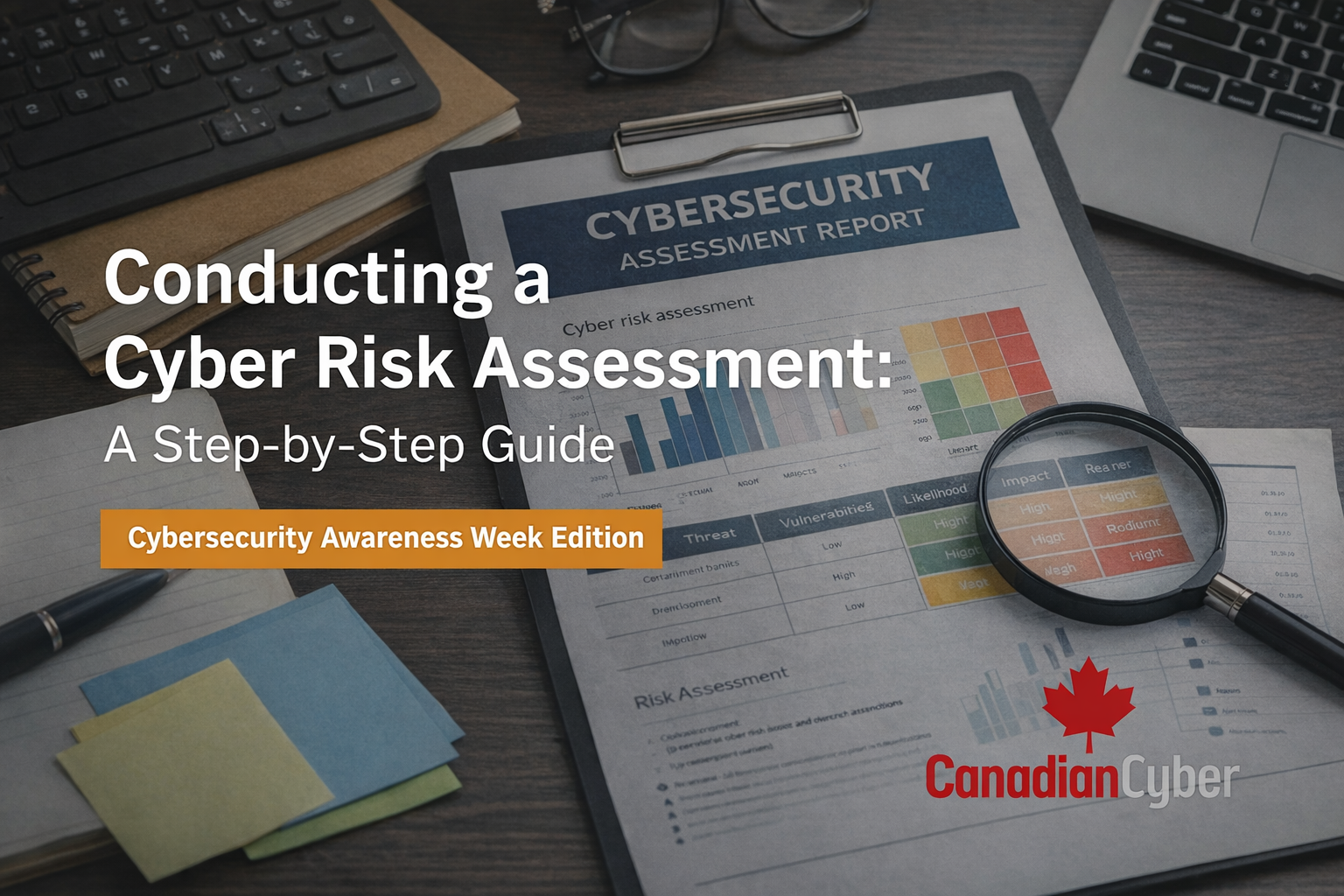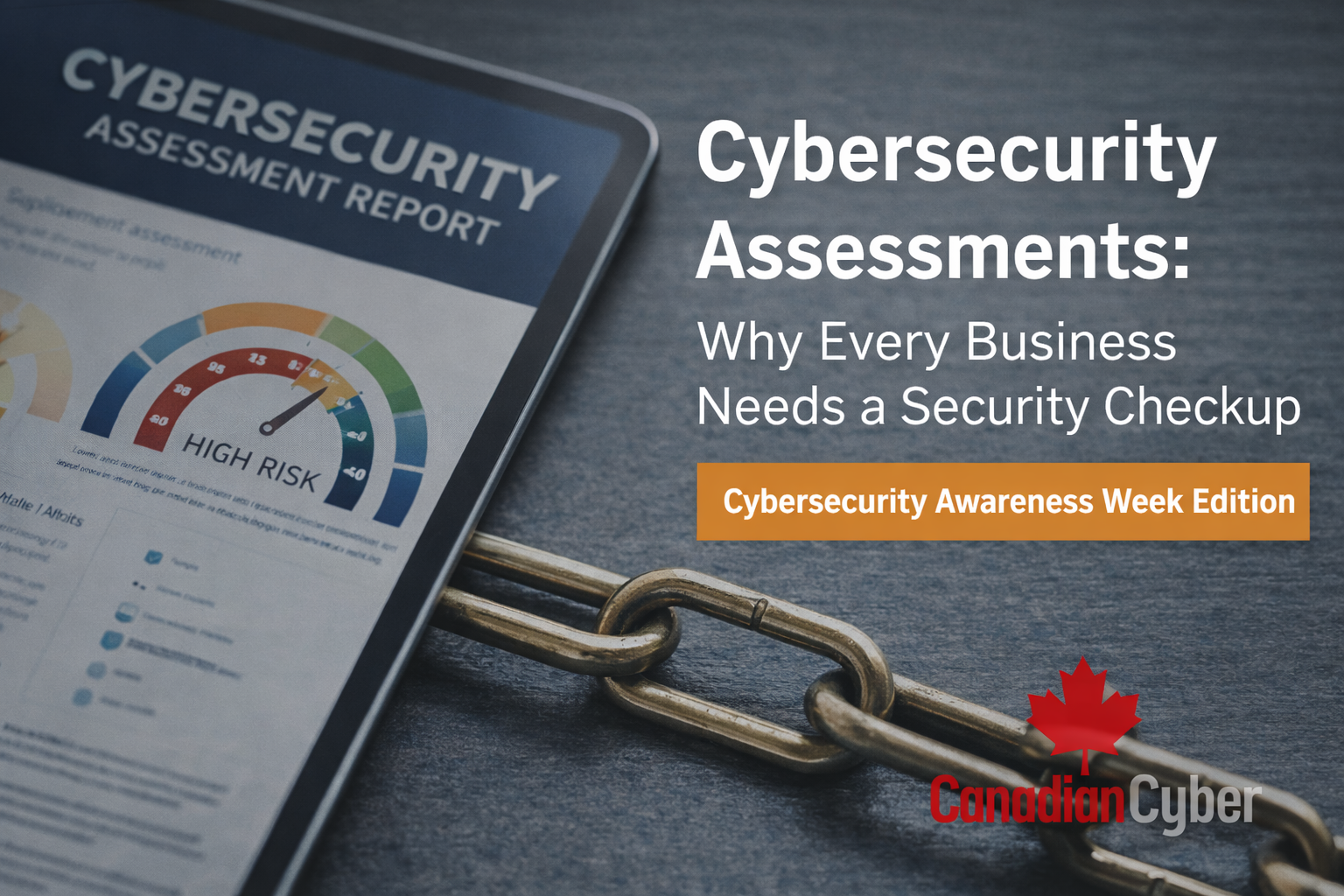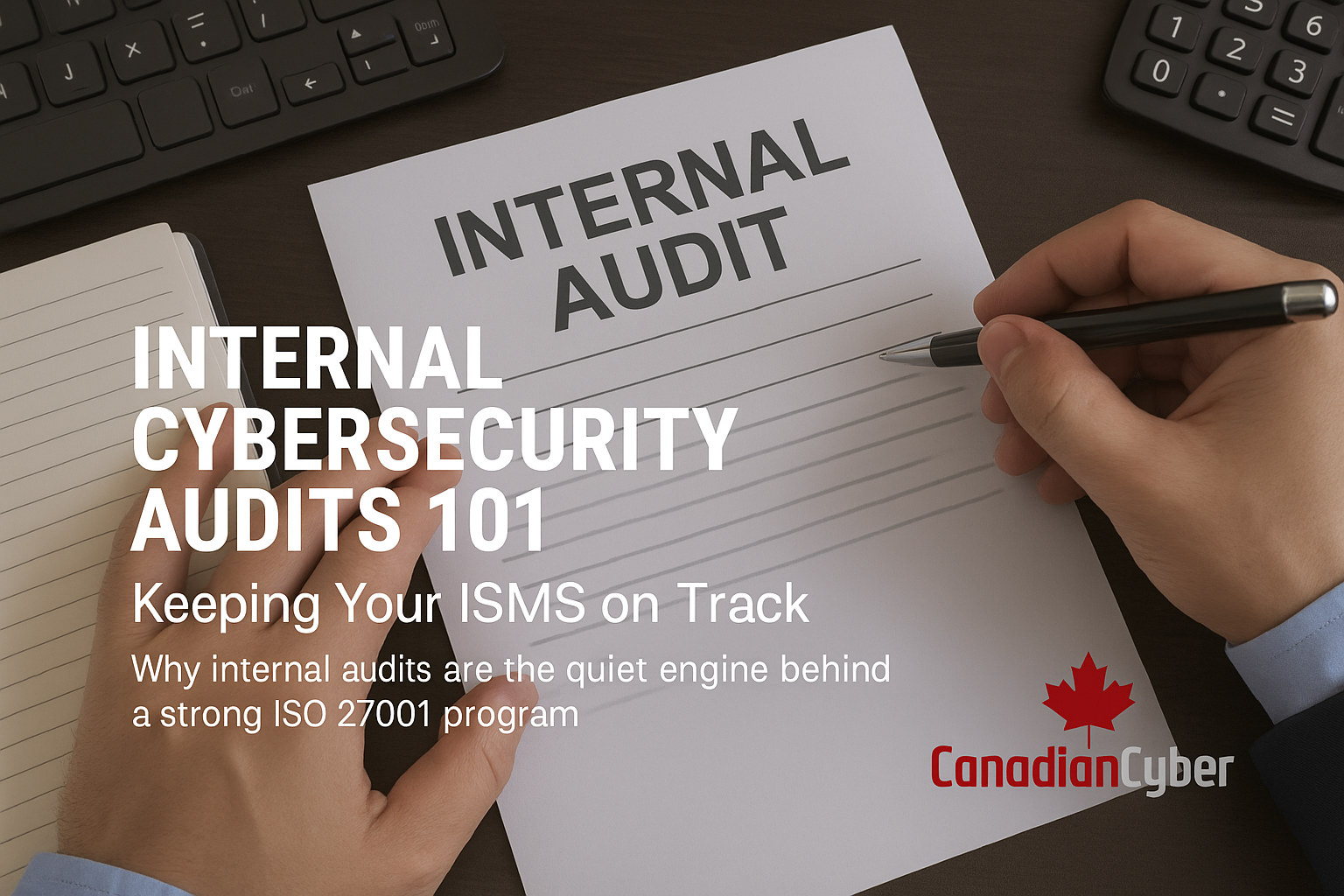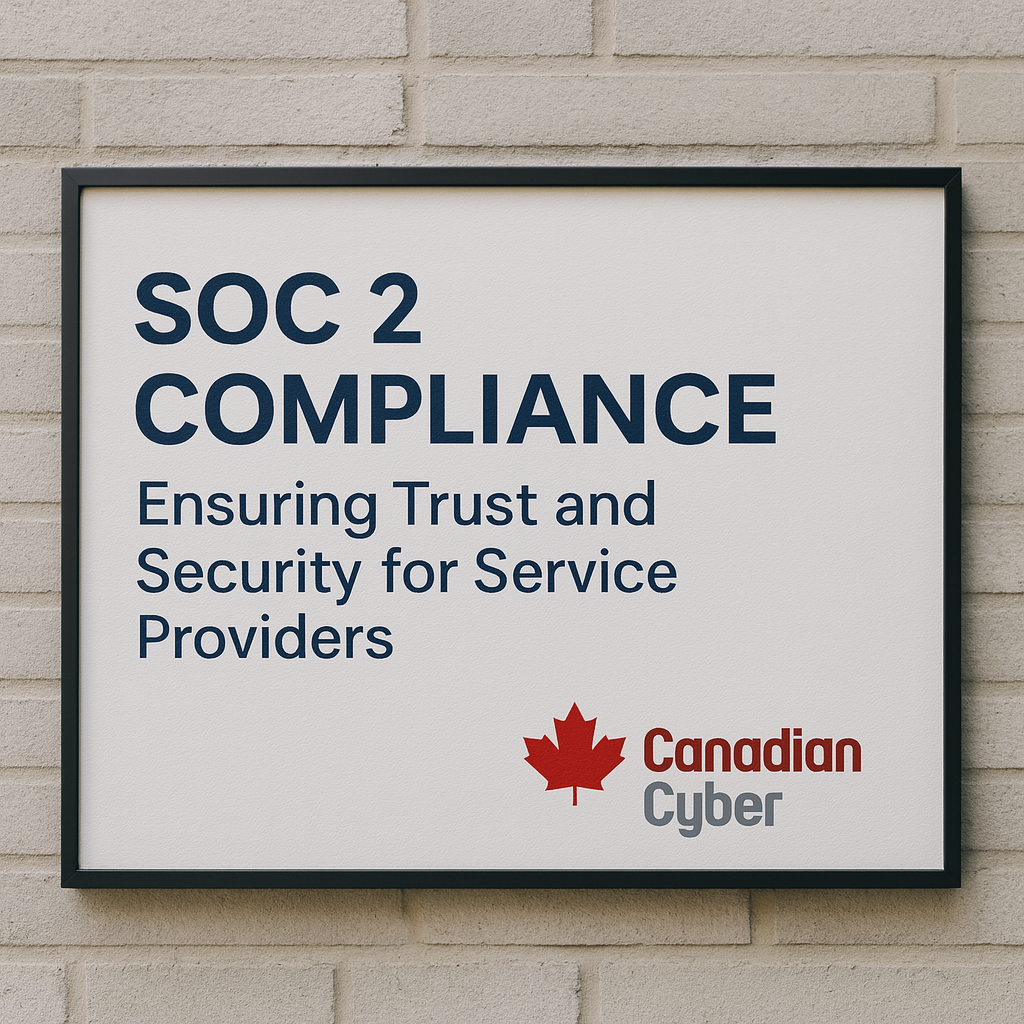How MSPs Can Build a Strong ISO 27001 Risk Management Process
Turning Cyber Risk Into a Managed Business Advantage
Every Managed Service Provider (MSP) in Canada faces a unique cybersecurity reality you don’t just protect your own infrastructure, you also safeguard your clients’ systems. That dual responsibility makes risk management the foundation of your credibility.
For ISO 27001-compliant MSPs, it’s not enough to “know” your risks. You must formally identify, assess, treat, and monitor them through a documented and repeatable process.
At Canadian Cyber, we’ve developed a practical Risk Treatment Process & Plan Template (CC-ISMS-005) that helps MSPs build a structured, auditable risk management process. It’s built directly on the requirements of ISO/IEC 27001:2022 Clause 6.1.3, ensuring that your risk controls are measurable, justified, and fully traceable.
Why a Risk Management Process Is Critical for MSPs
- Proactively address vulnerabilities before they become incidents.
- Standardize decisions about which risks to mitigate, transfer, or accept.
- Provide auditors with proof of consistent, risk-based decision-making.
- Build client confidence through documented accountability.
In other words, risk management isn’t bureaucracy it’s business assurance.
The ISO 27001 Risk Treatment Process in Action
To illustrate how this works, here’s a complete example based on our Canadian Cyber template, using the fictional MSP Maple Shield IT Services Inc.
Sample Risk Treatment Process & Plan
(Based on the Canadian Cyber CC-ISMS-005 Template)
1. Purpose
This Risk Treatment Plan defines how Maple Shield IT Services Inc. identifies, evaluates, and manages information-security risks affecting its operations and client environments. The plan aligns with ISO/IEC 27001:2022 Clause 6.1.3, ensuring that significant risks are mitigated and that only low residual risks are accepted.
2. Scope
This process applies to all departments, employees, contractors, and systems under Maple Shield’s control including managed client networks, on-prem servers, and cloud environments such as Microsoft 365 and AWS.
3. Risk Treatment Framework
- Identify Risks: Gather risks from the ISMS Risk Register and categorize by impact and likelihood.
- Evaluate Risks: Determine level (Low, Medium, High) and prioritize for treatment.
- Select Treatment Options: Avoid, mitigate, transfer, or accept each risk.
- Implement Controls: Apply ISO 27001 Annex A controls and operational safeguards.
- Monitor & Review: Verify effectiveness and update risk levels regularly.
4. Roles and Responsibilities
- CEO (John Miller): Provides leadership and approves overall risk-treatment strategy.
- ISMS Manager (Samantha Patel): Maintains risk register, coordinates treatment, tracks actions to completion.
- IT Operations Manager (Ryan Chen): Implements technical controls (backups, MFA, patching, logging).
- Department Leads: Act as risk owners; decide how each identified risk is handled within their domains.
- Internal Audit Function: Validates that treatments are effective and residual risks are documented.
- All Employees: Follow policies and report emerging risks or control failures.
5. Maple Shield’s Risk Treatment Plan (2025)
| # | Risk | Level | Treatment | Key Actions | ISO/IEC 27001 Controls (Annex A) | Owner | Residual Risk |
|---|---|---|---|---|---|---|---|
| R1 | Ransomware attack on client systems | High | Mitigate | Deploy EDR across clients; daily encrypted backups; monthly restore tests | A.8.5 (Malware Protection), A.8.7 (Backup and Restoration) | IT Ops Manager | Low |
| R2 | Unauthorized administrative access | Medium | Mitigate | Enforce MFA; quarterly privileged access reviews; strong password policy | A.5.17 (Authentication Information), A.5.15 (Access Control) | ISMS Manager | Low |
| R3 | Supplier breach affecting cloud services | High | Transfer / Mitigate | Updated DPAs; annual supplier security audits; vendor risk register | A.5.19, A.5.20, A.5.22 (Supplier Security & Monitoring) | Procurement Manager | Medium |
| R4 | Employee negligence / phishing click | Medium | Mitigate | Quarterly phishing simulations; mandatory awareness training; mail filtering | A.6.3 (Awareness & Training), A.8.10 (Email Security) | HR Manager | Low |
| R5 | Insider threat from trusted administrator | Low | Accept (justified) | Audit logs; separation of duties; periodic monitoring | A.8.15 (Logging & Monitoring), A.5.34 (Separation of Duties) | IT Ops Manager | Low (Accepted) |
6. Monitoring and Review
Risk treatment progress is reviewed monthly by the ISMS Manager and reported to executive management quarterly. All treatment records, approvals, and evidence are stored in the “ISMS Risk Register & Plans” repository for at least six years.
Annual internal audits and management reviews ensure ongoing effectiveness and identify new or emerging risks for the following year’s plan.
Approved by: John Miller, CEO | Date: October 10, 2025
Why This Example Works
- Maps every risk to a specific control and responsible owner.
- Demonstrates traceability from risk identification to residual acceptance.
- Ensures executive oversight and ongoing review key audit requirements.
With a plan like this, Maple Shield can prove to clients and auditors that its risk management process is not just documented it’s operational and effective.
How Canadian Cyber Helps MSPs Simplify ISO 27001 Risk Management
- ✅ Risk Treatment Templates & Plans (CC-ISMS-005) pre-built for MSPs
- ✅ Risk Registers, SoA & SoA Reviews
- ✅ ISO 27001 Certification Support & Audit Preparation
- ✅ Virtual CISO (vCISO) Services for strategic guidance
- ✅ Compliance Automation Solutions to track and monitor risks efficiently
We help MSPs move from reactive to resilient with documentation and processes that satisfy auditors and impress clients.
Ready to Strengthen Your MSP’s Risk Management Process?
Your clients count on you to manage their risk. Let’s make sure you’re managing your own with confidence.
Schedule Your Free Consultation



